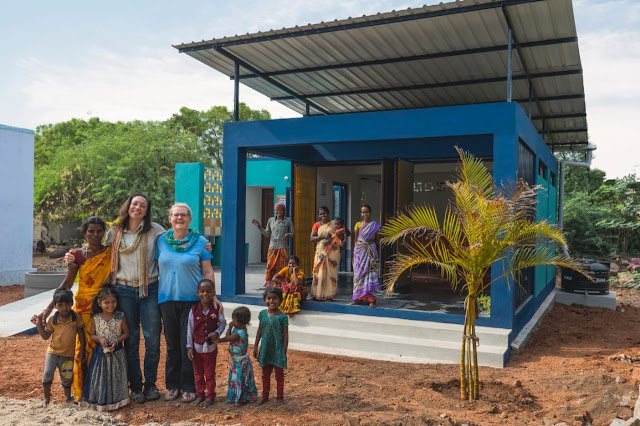POSITIVE ENCLOSURE
"I know zoos are no longer in people’s good graces. Religion faces the same problem. Certain illusions about freedom plague them both." - Yann Martel
On Holocaust Remembrance day, I want to write about contained spaces. I am reminded of a fantastic chapter, early in the book, “Life of
Pi” by Yann Martel, that argues any animal can become accustomed to it’s ‘cage’ or
‘compound.’ I didn’t really want to believe this as I delved further into the book years ago, and I still don’t, but having lived in what is basically an expat compound here in
India for two months I have started to see what the author and character
meant. As animals we adapt to the
challenges and constraints of our environment, rarely seeing the negative and
always finding ways to make it positive or manageable.
If someone had described this to me prior to volunteering, it
probably would have turned me off of the experience and yet this “Ground Hog Day,” life that I now lead is really quite comfortable. Every meal is made, our rooms are cleaned for
us when we ask, and the walls around us mean there is a basic level of serenity
throughout the campus compared to the intense hustle and bustle of the streets
of Anantapur.
The reason I decided to write about this is because we all have
different perceptions of what is ‘enough’ space for us to exist and inhabit. Having lived in remote Australia for the past 6
years, I am used to having a lot of space all to myself – so much so that the Dixie Chics’
song, “wide open spaces,” frequently comes to mind while driving it's vast
expanses or flying over the beautifully patterned landscape. I thought I could never live in a city again,
and especially not a compound, but I was wrong.
And the constraints of this compound remind me how a family in Tokyo can
exist in less than a 9 square meter apartment or an Indian migrant worker and their family can exist under a single blue tarpaulin pitched by two poles.
This has also made me consider the current living arrangement alongside
the youth justice work I have been a part of for the last two years, and I have come
to the personal hypothesis that psychologically I, and any other intelligent animal,
remain accepting of being enclosed in a set surrounding if I/it are able to leave
at will; if not, that’s when I believe I/it would start to feel the confines of the environment negatively.
And so I decided, after one of my 20+ lap runs around the compound where this blog post originated, to look further into the psychology of space a bit more - for work and out of genuine interest. I stumbled across this really interesting
abstract(link below). It investigates and tests how different
geometries are experienced and then how they make people feel. It’s an initial study but the results
were fascinating and the opposite of what was expected – which was that general
public would prefer symmetrical and familiar shapes when in fact they preferred
asymmetric curves. And the majority of humans
in the test groups preferred asymmetry in space over symmetry! I found this fascinating
because if this research continues and becomes more conclusive Architects could
have a scientifically based way to ensure a client likes/approves their design proposals or have better chances at winning design competitions.
The paper I mention can be read at the link below:
If you want to take this train of thought to another level, there
are also some really interesting studies around animals in space that you might
find interesting as well:
 |
| Migrant Workers Camp at the base of Bukkaraya Hill, Andre Pradesh |


Comments
Post a Comment